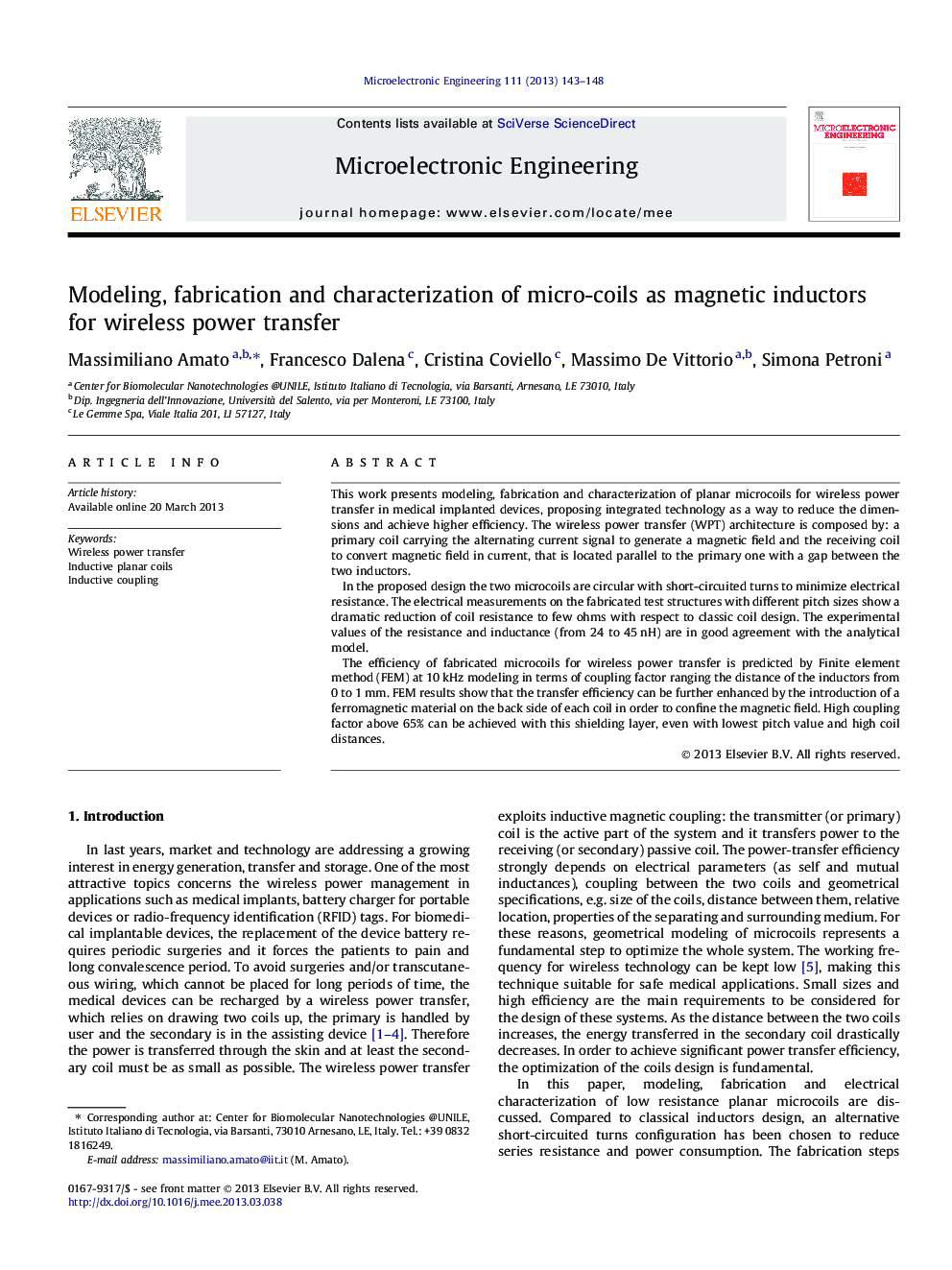| Article ID | Journal | Published Year | Pages | File Type |
|---|---|---|---|---|
| 539970 | Microelectronic Engineering | 2013 | 6 Pages |
•A wireless power transfer system based on magnetic induction is proposed.•Integrated planar microcoils have been modeled, fabricated and simulated.•EM analysis has been performed to evaluate coupling at different coils distances.•Magnetic shielding layers on the back of the coils strongly increase efficiency.
This work presents modeling, fabrication and characterization of planar microcoils for wireless power transfer in medical implanted devices, proposing integrated technology as a way to reduce the dimensions and achieve higher efficiency. The wireless power transfer (WPT) architecture is composed by: a primary coil carrying the alternating current signal to generate a magnetic field and the receiving coil to convert magnetic field in current, that is located parallel to the primary one with a gap between the two inductors.In the proposed design the two microcoils are circular with short-circuited turns to minimize electrical resistance. The electrical measurements on the fabricated test structures with different pitch sizes show a dramatic reduction of coil resistance to few ohms with respect to classic coil design. The experimental values of the resistance and inductance (from 24 to 45 nH) are in good agreement with the analytical model.The efficiency of fabricated microcoils for wireless power transfer is predicted by Finite element method (FEM) at 10 kHz modeling in terms of coupling factor ranging the distance of the inductors from 0 to 1 mm. FEM results show that the transfer efficiency can be further enhanced by the introduction of a ferromagnetic material on the back side of each coil in order to confine the magnetic field. High coupling factor above 65% can be achieved with this shielding layer, even with lowest pitch value and high coil distances.
Graphical abstractFigure optionsDownload full-size imageDownload as PowerPoint slide
